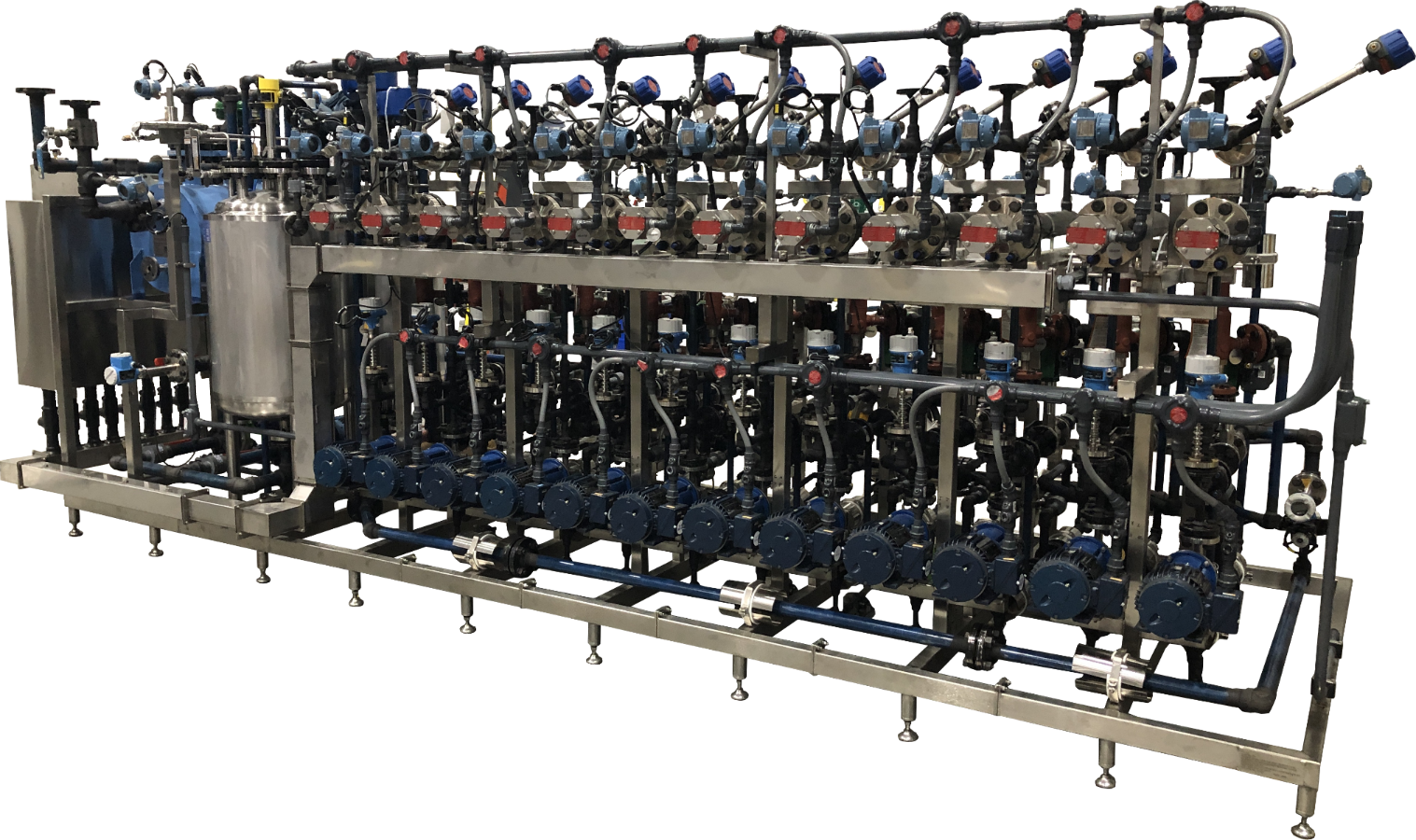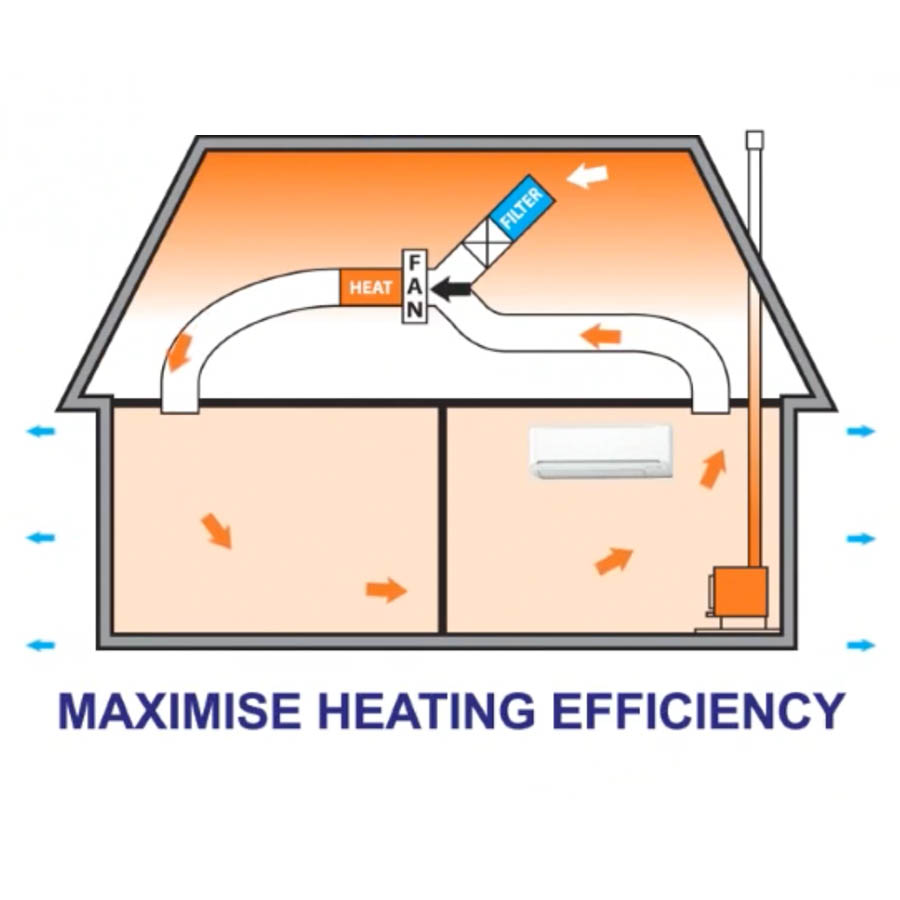Best Practices for Using DVS Heat Transfer Systems in Data Centers
Wiki Article
Exploring the Benefits and Applications of Heat Transfer Equipments in Modern Sector
Heat transfer systems play a necessary function in contemporary industry. They encompass various devices such as convection, conduction, and radiation, each adding to efficient thermal monitoring. Industries like production and aerospace benefit significantly from these systems. As improvements continue, the assimilation of cutting-edge materials and technologies guarantees to enhance power performance. This development raises important questions concerning the future ramifications for sustainability and functional expenses across numerous industries. What lies in advance in this recurring makeover?Understanding Heat Transfer Principles
Heat transfer concepts are fundamental to the procedure of various commercial systems. These principles incorporate the devices of convection, conduction, and radiation, each playing a vital duty in managing thermal power. Understanding conduction entails evaluating how Heat relocates with strong materials, while convection relate to Heat transfer in liquids, driven by liquid movement. Radiation, distinct from the other two, entails power transfer with electro-magnetic waves. The performance of Heat transfer impacts system efficiency, power consumption, and general performance. Effective thermal management is necessary in processes such as home heating, Heat, and cooling healing. By understanding these principles, industries can enhance their procedures, lower energy prices, and boost equipment longevity, consequently adding to an extra lasting and efficient commercial landscape.Trick Kinds Of Heat Transfer Equipments
While numerous sectors make use of Heat transfer systems for varied applications, a number of crucial types attract attention due to their specific functions and effectiveness. The most typical types include radiation, transmission, and convection systems. Conduction systems transfer Heat through direct call in between products, making them reliable in solid-state applications. Convection systems, on the various other hand, make use of liquid movement to move Heat, ideal for home heating or cooling fluids and gases. Radiation systems operate without a tool, counting on electro-magnetic waves to transfer Heat, perfect for high-temperature environments. Each kind offers unique functions, allowing sectors to customize their Heat transfer services based on functional requirements, energy performance, and cost-effectiveness. Recognizing these systems is important for enhancing efficiency in different commercial settings.Industrial Applications of Heat Transfer Technologies
The application of Heat transfer technologies in industry plays an essential duty in improving energy efficiency and maximizing procedures. DVS Heat Transfer Systems. By executing innovative Heat exchange systems, firms can substantially minimize their ecological impact while improving total efficiency. This assimilation not just promotes sustainability however also lines up with contemporary regulatory and consumer needs for greener methodsPower Effectiveness Improvements
As markets increasingly focus on sustainability, energy effectiveness renovations in Heat transfer technologies have ended up being necessary for minimizing operational prices and ecological impact. Improved Heat exchangers, for instance, use sophisticated products and layouts to optimize thermal efficiency while reducing power consumption. In addition, integrating variable speed drives in pumping systems permits better control of liquid circulation, resulting in significant energy cost savings. The execution of smart sensors and automation offers real-time tracking, making it possible for changes that maximize power usage. In addition, waste Heat healing systems capture excess thermal energy, converting it into useful power. These innovations not only improve energy effectiveness but additionally contribute to a more sustainable industrial landscape by decreasing greenhouse gas emissions and supporting conformity with ecological laws.Refine Optimization Techniques
Process optimization strategies are vital in improving the effectiveness and efficiency of Heat transfer technologies in industrial applications. These techniques entail refining processes to take full advantage of Heat transfer performance while minimizing energy intake and functional expenses. Methods such as computational fluid dynamics (CFD) modeling allow designers to replicate and examine Heat transfer scenarios, recognizing locations for enhancement. Additionally, real-time monitoring systems can provide beneficial information on temperature slopes and flow prices, allowing adjustments that maximize efficiency. Implementing innovative control approaches, such as predictive analytics, can improve system responsiveness to varying operational demands. By using these optimization techniques, sectors can accomplish better thermal effectiveness, decreased downtime, and boosted product quality, eventually leading to boosted competitiveness in the market.
Environmental Impact Decrease
While industrial Heat transfer technologies are go to this site crucial for operational performance, their application also provides possibilities for significant ecological impact reduction. By enhancing energy performance, these systems minimize fuel intake, causing reduced greenhouse gas discharges. Advanced Heat exchangers can recuperate waste Heat, rerouting it to preheat inbound liquids, thereby decreasing power demands. Additionally, the combination of Heat transfer modern technologies in renewable resource systems, such as solar thermal and geothermal applications, supports the shift to sustainable techniques. Industries that use these technologies also take advantage of reduced operational costs and enhanced regulatory compliance. Overall, the tactical application of Heat transfer systems not just strengthens performance yet additionally cultivates an extra lasting commercial landscape, adding to worldwide internet ecological goals.Advantages of Efficient Heat Transfer Equipments
Reliable Heat transfer systems supply substantial benefits in contemporary market, mainly with improved energy efficiency and cost reduction. By enhancing thermal monitoring, these systems lessen power waste, bring about lower functional prices (DVS Heat Transfer Systems). Organizations can achieve better sustainability and enhanced earnings.
Energy Effectiveness Improvements
As markets significantly focus on sustainability and cost-effectiveness, power efficiency improvements in Heat transfer systems have actually become an important emphasis. Improved effectiveness in these systems brings about lowered energy intake, enabling facilities to operate more sustainably. By optimizing Heat transfer approaches, markets can reduce waste Heat and accomplish much better thermal administration, significantly decreasing their ecological influence. Developments in modern technologies such as Heat exchangers and insulation products add to boosted efficiency and integrity. Executing energy-efficient Heat transfer options not only supports conformity with regulative standards yet additionally promotes a culture of technology within companies. Eventually, these improvements are important in straightening commercial operations with international energy preservation objectives, paving the method for a more lasting future in manufacturing and processing industries.Price Reduction Opportunities
By maximizing Heat transfer systems, industries can expose substantial expense decrease chances that enhance their profits. Effective Heat transfer reduces power consumption, bring about lower energy expenses and minimizing functional expenses. Furthermore, enhanced system efficiency reduces the need for upkeep and repair work, in addition saving expenses over time. Enhanced Heat transfer can additionally extend equipment life-span, allowing business to postpone resources expenses on substitutes. Moreover, waste Heat recovery systems can transform excess Heat right into useful energy, even more driving down expenses. These systems not only enhance procedures yet likewise add to sustainability initiatives, positioning companies positively in an increasingly eco-conscious market. click here for info Generally, the economic advantages of efficient Heat transfer systems are substantial and necessary for affordable benefit.Innovations in Heat Transfer Solutions
Just how can contemporary sector boost its operations with cutting-edge Heat transfer remedies? By adopting advanced materials and innovations, industries can considerably enhance thermal effectiveness and performance. Developments such as nanofluids, which improve Heat transfer abilities beyond conventional liquids, and stage change materials that store and release thermal power, are acquiring grip. In addition, the integration of smart sensing units and IoT gadgets enables real-time tracking and optimization of Heat transfer procedures, reducing waste and boosting system responsiveness. Additive manufacturing strategies enable the creation of more complicated Heat exchangers that optimize surface area while reducing material use. Collectively, these innovations drive functional effectiveness and create affordable advantages in different fields, including manufacturing, power, and aerospace.The Function of Heat Transfer in Sustainability Efforts
While the press for sustainability continues to improve markets, the duty of Heat transfer innovations comes to be progressively vital in achieving ecological goals. Efficient Heat transfer systems assist in power efficiency by maximizing thermal administration in numerous processes, substantially reducing power intake and greenhouse gas emissions. Advanced Heat exchangers are used in industrial applications to redeem waste Heat, thus lessening power waste. Additionally, advancements such as stage change materials improve thermal storage, adding to renewable resource integration. Furthermore, the fostering of lasting liquids in Heat transfer systems can reduce environmental impact. By prioritizing effective Heat transfer, markets not just boost functional efficiency yet additionally straighten with international sustainability initiatives, fostering a cleaner, much more lasting future.Regularly Asked Inquiries
Just How Do Heat Transfer Systems Effect Energy Expenses in Manufacturing?
Heat transfer systems substantially affect power prices in production by boosting effectiveness, minimizing waste, and maximizing thermal administration. These enhancements result in reduce operational costs, inevitably benefiting general productivity and success in industrial procedures.What Upkeep Is Required for Heat Transfer Solutions?
Maintenance for Heat transfer systems consists of routine evaluations, cleaning of parts, examining fluid levels and conditions, replacing used parts, and ensuring correct insulation. These activities enhance performance, prolong life expectancy, and protect against pricey failures in operation.Are There Safety And Security Worry About Heat Transfer Equipments?
Safety and security interest in Heat transfer systems consist of prospective leaks, stress build-up, and thermal dangers. Proper layout, regular upkeep, and adherence to safety methods are important to minimize these risks and ensure secure operation in industrial settings.
How Can I Select the Right Heat Transfer System for My Organization?
Picking the right Heat transfer system includes reviewing factors such as effectiveness, application needs, spending plan constraints, and safety requirements. A thorough analysis of these aspects will certainly aid guarantee optimal efficiency and integrity in organization procedures.What Prevail Failures in Heat Transfer Equipments and Their Causes?

Understanding transmission entails analyzing just how Heat moves via solid materials, while convection pertains to Heat transfer in liquids, driven by liquid motion. By enhancing Heat transfer techniques, sectors can lessen waste Heat and accomplish far better thermal monitoring, considerably lowering their environmental impact. Waste Heat recovery systems can change excess Heat into functional power, better driving down costs. Advanced Heat exchangers are used in commercial applications to redeem waste Heat, thus minimizing energy waste. Typical failings in Heat transfer systems consist of leakages, deterioration, and ineffective Heat exchange.
Report this wiki page